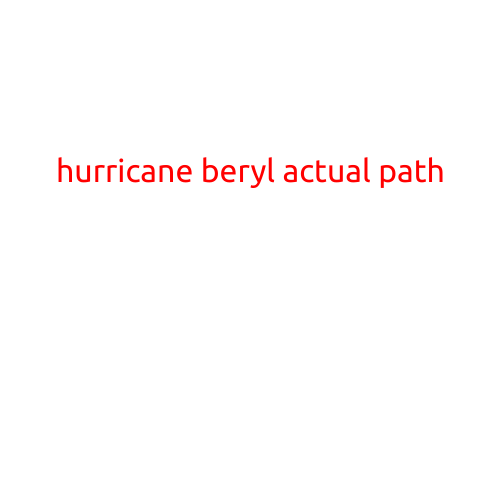
Hurricane Beryl (1988)
Hurricane Beryl was a tropical cyclone that formed in the Atlantic Ocean in June 1988. The storm was the fourth named tropical cyclone of the 1988 Atlantic hurricane season and brought heavy rainfall and strong winds to various islands in the Caribbean.
Formation and Path
Beryl originated from a tropical wave that moved off the coast of West Africa on June 14, 1988. The wave gradually developed into a tropical depression on June 15, and it intensified into a tropical storm on June 17. The storm was given the name Beryl shortly after its intensification.
Beryl continued to strengthen as it moved westward across the Atlantic, fueled by warm sea surface temperatures and a low-pressure system. On June 22, the storm reached its peak intensity, with maximum sustained winds of 75 mph (120 km/h) and a central pressure of 990 mbar (29.23 inHg).
As Beryl began to weaken, it turned northwestward, impacting the northeastern Caribbean on June 24. The storm brought heavy rainfall and strong winds to Barbuda, Anguilla, and the British Virgin Islands, causing widespread damage and power outages.
Impact
Beryl’s impact was most significant in the Caribbean, where it caused significant damage and disruption. The storm brought heavy rainfall, with totals reaching up to 8 inches (20 cm) in some areas. The winds were also strong, with gusts reaching up to 90 mph (145 km/h).
The effects of Beryl were felt particularly in Barbuda, where the storm surge caused significant flooding and damage to homes and infrastructure. The island was left without power for several days, and the government declared a state of emergency.
In the British Virgin Islands, the storm caused widespread power outages and damage to buildings and infrastructure. The islands were also affected by the storm surge, which caused flooding in some areas.
Aftermath
In the aftermath of Beryl, relief efforts were underway to assist those affected by the storm. The governments of Barbuda, Anguilla, and the British Virgin Islands provided aid and support to those in need, and international organizations such as the Red Cross and the United Nations provided additional assistance.
Beryl’s remnants eventually dissipated in the Atlantic Ocean on June 27, marking the end of its impact.
Conclusion
Hurricane Beryl (1988) was a significant tropical cyclone that brought heavy rainfall and strong winds to various islands in the Caribbean. The storm caused significant damage and disruption, and its impact was felt particularly in Barbuda and the British Virgin Islands. Despite the challenges posed by the storm, relief efforts were successful in assisting those affected, and the region was able to recover from the devastating effects of Beryl.





